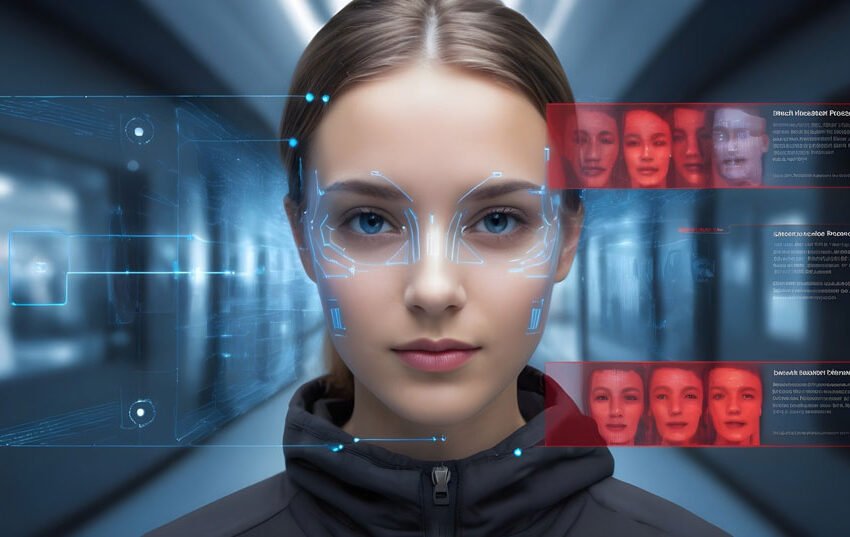Liveness Detection in Biometrics: Enhancing Security Against Spoofing in 2025

With more attention being given to digital security, liveness detection in biometric systems has started to revolutionize the protection of one’s identity. By 2025, liveness detection will become the prime function against fraud attacks especially in facial recognition, fingerprint scanning, and online identity verification.
This article explains the scientific background of liveness detection, its various types, its applications, and its role in protecting against spoofing attacks. The guide explores the importance of this newly developed technology and its trajectory for the future with consideration for both technical experts and security-conscious users.
What is Liveness Detection?
Liveness detection is a biometric security process that includes verification to ensure that the source of a biometric sample (face/fingerprint, for example) is from a living human being rather than a spoof/replica. The technology distinguishes between actual users and their false representations, like pictures from magazines or newspapers, videos, silicone masks, and deepfake technologies.
The principal intent behind liveness detection is to defeat identity fraud in biometric authentication systems. It is becoming all the more important in this recent world of online transactions and remote onboarding.
Types of Liveness Detection
Passive Liveness Detection
Passive liveness detection contains no user interaction. It analyzes either a single frame or a set of biometric data to look for life signals. It is easier for users, a drop-and-pick type of detection, yet there are preferential moments where this approach may fall short; say, very high-quality forgeries.
Active Liveness Detection
Active liveness detection requires user interaction, for example, users would blink, smile, turn their head, or perform any interactive prompts. This method is much more resistant to attacks on a sophisticated level, therefore perfectly suited to high-security scenarios.
Applications of Liveness Detection in 2025
1. Financial Services
Banks and fintech firms use the software for liveness detection during remote account opening and transaction authentication. This guards against fraudsters attempting to use stolen identities or doctored images.
2. Border Control and Travel
Automated passport control systems integrate live detection to ascertain the travelers’ authenticity. Such applications correlate between passport data and images or detect liveliness in passing selfies.
3. eKYC (Electronic Know Your Customer)
In these domains, liveness detection is a factor that impacts the contractors’ ability to ascertain factually their remote verification of identification for telecom services, digital wallets, and online platforms. Document liveness detects that the submitted IDs might be real and not just digital forgeries.
4. Healthcare and Insurance
Hospitals and insurance companies use liveness technology to prevent identity theft and ensure benefits reach legitimate users.
5. Online Voting and Exams
As remote voting and online proctoring gain popularity, face liveness detection ensures that a real person is participating and not being impersonated.
The Science Behind Liveness Detection Technology
Liveness detection technology uses a combination of biometric signals, AI algorithms, and computer vision to analyze unique human features and behaviors. Here’s how it works:
Texture and Reflection Analysis
AI models analyze skin textures, depth information, and reflections from the face or fingerprint to detect artificial surfaces.
Eye and Facial Movement
Subtle micro-expressions, eye movement, and blinking patterns are nearly impossible to accurately replicate in photos or videos and therefore make for an effective cue for liveness.
3D Depth Sensing
Uses infrared cameras and depth sensors to check the three-dimensionality of faces in order to distinguish between 2D imaging versus real user.
Voice and Audio Cues
In multimodal systems, voice recognition together with liveness checks strengthens security through the detection of playback attacks.
Benefits of Liveness Detection in Biometric Security
1. Enhanced Spoof Protection
From paper printouts to hyper-realistic masks and deepfakes, attempts at spoofing have gained increasing sophistication. The defence offered by liveness detection becomes very important.
2. Seamless User Experience
Especially with passive liveness detection, seamless authentication is delivered to the users, with no interruption in their experience.
3. Cost Reduction
Fraud detection automation reduces costs for companies concerning manual handling of identity verification and chargebacks, in case of impersonation.
4. Compliance with Regulations
Widespread industries must comply with KYC and AML regulations. Liveness detection enhances compliance and increases operational efficiencies.
Face Liveness Detection and Video-Based Approaches
Face Liveness Detection
This approach guarantees that facial biometrics being utilized for the purpose of verification are real and live. It monitors eye blinking, facial movements, and thermal signatures. This is what most modern smartphones use to implement liveness detection in unlocking and payment apps.
Video Liveness Detection
In this paradigm of WLD, the user is prompted to follow actions in a short recorded clip, such as turning their head or repeating a phrase. This makes it considerably harder for attackers to utilize deepfakes or manipulated videos.
Challenges in Recognition of Liveness
Evasion Strategies
The criminal cyberspace is being constantly invented by the criminals to get through wiretapping awareness using hyper-realistic props or artificial digital assets.
Hardware Limitations
The mechanism might not have all the advanced cameras or sensors that would enable top-quality liveness detection software.
False Positives and Negatives
Untrained models may classify real users as fake or may not recognize a spoof attempt. Hence, a diverse and inclusive training of AI is required to avoid any algorithmic bias.
Privacy Issues
Biometric data collection raises issues of privacy. It should ensure transparency and secure storage.
Innovations in Liveness Detection by 2025
All about future technology comes with fast-moving advancements. Some of the critical trends are as follows:
Multimodal Biometrics
This combination brings with other recognition modalities – face, fingerprints, and voice – along with their liveness checks.
AI and Machine Learning
The AI model will be trained better with feedback in real-time and be adaptive enough to improve its reliability in detecting live versus spoofed input.
On-Device Processing
Bringing more liveness detection algorithms directly to the user means speed and privacy for the user, so that it doesn’t have to send data to servers.
Blockchain and Decentralization
Proof of liveness in decentralized, ideal conditions ensures much better data integrity and better user control over personal information.
Best Practices for Implementing Liveness Detection.
Assess Risk Levels: Choose active or passive detection based on security requirements.
Certified Providers: Identity technology vendors that are compliant with ISO/IEC standards and have been thoroughly tested.
Educate Users: Guide them as to the reasons and protection methods that apply to their biometrics.
Update Regularly: AI models must evolve with new spoof tactics and learn continuously.
Test Over Demographics: Cross-diverse population testing to remove bias in software.
FAQs: Frequent Queries
What is liveness detection?
It is a biometric technology to identify if an individual’s biometric sample is live, rather than artificially spoofed by pictures, videos, or masks.
How does facial liveness detection work?
Liveness detection through face employs artificial intelligence algorithms that appreciate the dynamic aspects and 3D texture of skin over time at the face to ascertain in achieving the presence of a live human being.
Is the liveness detection safe for use?
Yes. Standard liveness detection software manages user data so that it remains secure and is only used for authentication.
What are the advantages of active liveness detection?
Active liveness detection provides a greater degree of accuracy and resistance to deepfake and replay attacks by having users perform some actions that are proof of being live.
Is it possible to bypass video liveness detection?
While nothing is completely foolproof, modern video liveness detection uses multiple layers of checks, making it extremely difficult to bypass.
Conclusion
With an increase in digital interactions, liveness detection becomes the foundation of biometric security. It is this technology that will ensure that unlocking that smartphone, verifying one’s identity for a loan, or for accessing healthcare services is really the person behind that screen.
By learning about the subtleties of face liveness detection, video liveness detection, and the role of liveness detection software, organizations can remain a step ahead of identity fraud and build user confidence. In the future, the integration of liveness detection technology within digital experiences will go a long way in strengthening security as well as simplifying how we verify identity in an interconnected world.





